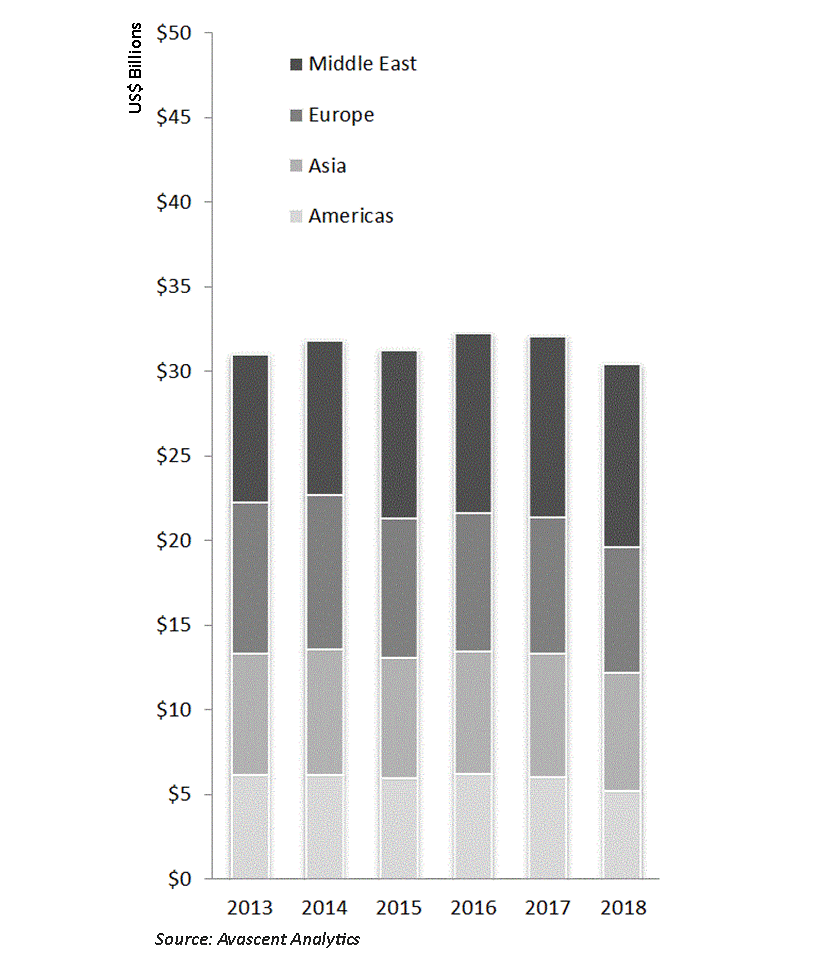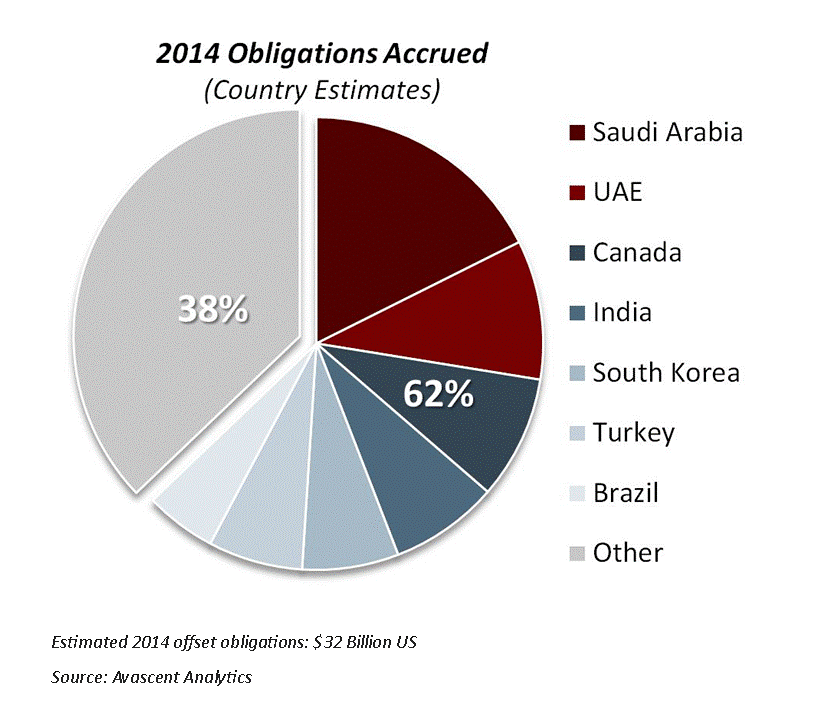Global Offsets Grow Unabated Amid Evolving Requirements and Goals
An Update on the Scope and Geography of the Offsets Market
Despite the much discussed downturn in defense spending, offsets continue to be a robust—though less appreciated—element of the global defense market. Over the coming five years, offset obligations impacting nondomestic prime defense contractors are expected to total roughly $190 billion, peaking in 2016 at close to $33 billion in annual obligations. Indeed, the coming five years are but a precursor of a future offset boom as many delayed defense investments take off late in the decade. Original equipment manufacturers (OEMs) and prime integrators are not the only ones impacted by this growing set of obligations; major systems partners and suppliers are increasingly seeing obligations flow down. If approached correctly, this growing pool of funding can be a major business and development windfall for countries, their industries, and global defense partners and providers. Beyond traditional offsets shown here, a growing array of defense programs are collaborative in nature. One need not look beyond the multinational JSF fighter program: industrial participation of non-U.S. partners was not conceptualized as an offset in the strict definition, but it fulfills its intent and objectives. This approach, in turn, has played a major role in keeping this complex program sold worldwide.

Our most recent assessment of the global defense offset market is consistent with past reports published with Avascent’s strategic communications partner Fleishman-Hillard. In 2014, the top seven offsets markets, notably Saudi Arabia, UAE, and India along with several others are expected to generate over 60 percent of obligations accrued.
These countries are characterized by a strong interest in high-technology solutions and can boast of solid defense budgets underwriting major defense re-capitalization and modernization efforts across the air, land, and maritime domains. Alongside the spending aspect, many of these countries are in the process of modifying their offset requirements and goals, challenging global defense OEMs and integrators to find increasingly innovative and technology-driven approaches to offsets retirement.

Offsets are driven by programs across the operational spectrum, though airborne—including both rotor and fixed wing aircraft—and missile defense programs feature prominently in the coming period. In the maritime domain, offset programs tend to be driven by the most complex engineering tasks such as undersea warfare, electronics and weapons systems, while many emerging countries have mastered shipbuilding, so much so that they are keenly eyeing export markets themselves.

Increasingly, some of the leading offset generators are seeking more than trailing services and maintenance, repair and overhaul (MRO): playing a role in assembly, components, and inserting themselves into the global defense supply chain is the preferred direct offset course. While motivations for this approach are clear, the required technology transfers are difficult, and some observers question the long-term viability of a multitude of small-scale defense industries with little sustained domestic demand. Specialization in the defense sector, or a broader pool of offset fulfillment opportunities, a concept proven by a number of countries, may be one way to address these goals and develop self-sustaining markets.
Findings
The outlook for offsets is ever-evolving, as is the nature of the defense industry. A few countries in this pool are facing notable currency devaluation or cuts to defense budgets, constraining buying power. Others have experienced delays in major platform acquisitions, as is the case of Brazil. Another grouping of countries is embarking on domestically-driven investment efforts. Despite these countervailing trends, the offset market continues to expand as additional countries consider offsets or sharpen their requirements, while industry struggles to keep pace. Facing these hurdles, industry’s approach must continue to focus on:
- Elevating offsets to a strategic priority
- Educating internal stakeholders
- Being visible to key audiences
- Implementing robust business fundamentals
- Effectively leveraging partnerships
Methodology
Data on offset obligations is derived from the Avascent Analytics International Defense Database, a proprietary data and decision support tool on international defense sales. Using past and projected future sales as the baseline, Avascent derives offset obligations:
- Defined sales for countries with an active offset policy
- Segmented sales by contractor, country, size, and sales type
- Applied country specific offset criteria
- Adjustments to Avascent’s projections were made for sales not subject to offsets or where offsets have been satisfied as part of a joint program (e.g., trade between members of the European Union) and for programs where a sale is anticipated in the future, but no contract has been awarded
- For additional information on past studies visit www.strategicoffsets.com





